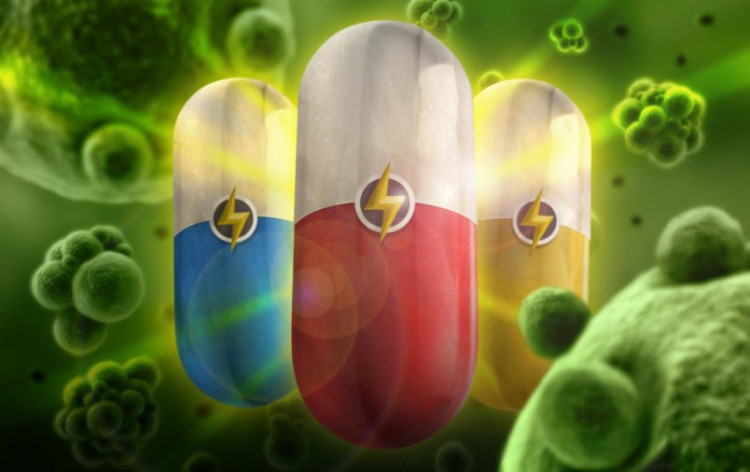Three types of antibiotics defeat the most dangerous drug resistance gene of the virus
Mcr-1, a gene found in all bacteria resistant to all antibiotics, was discovered by a group of scientists to defeat it. They do this by combining three antibiotics together: aztreonam, amikacin and polymyxin B.
'The golden era of antibiotics is not over yet , ' said one of the researchers.
Before that, mcr-1 E. coli bacteria were still called 'nightmares' by US health officials . It poses an emergency threat globally and has appeared in 30 countries. Besides mcr-1, the synthetic antibiotic of US scientists is also capable of fighting ndm-5 , a gene that gives other bacteria strong resistance to bacteria.

Three types of antibiotics defeat the virus's most dangerous resistance gene.
The antibiotic golden era has not ended?
18 months ago, for the first time, the gene mcr-1 was resistant to all antibiotics discovered in China. Since then, mcr-1 has been added to more than 30 countries including the US, Europe, and even Vietnam. The spread rate is rated as alarming.
In the United States alone, at least nearly two dozen cases of E. coli with mcr-1 have been reported. More and more cases of mcr-1 genes are detected on bacteria, the greater our concern about the incurable infections.
Associate Professor Brian Tsuji from the School of Pharmacy and Pharmaceutical Science said: "Bacterial strains carrying the gene mcr-1 and ndm-5 represent an urgent threat, because of the level of resistance to antibiotics of they are very high plus the ability to spread quickly ".
'Gram-negative bacteria, including E. coli carrying the mcr-1 gene, pose a major threat. We believe that the emergence of mcr-1 and ndm-5 in patients may be a signal for what will happen , 'warned Associate Professor Zackery Bulman of the University of Illinois.
What Bulman implies here is the post-antibiotic era, when all human drugs fail to bacteria. However, he said: 'The golden era of antibiotics is not over yet.' He and his colleagues are helping doctors prepare treatments for the emergence of new strains of bacteria.
"We had to work quickly and creatively ," he said. "This is the first study to offer a treatment with three antiviral antibiotics containing the gene mcr-1 and ndm-5. ".
Combining 3 types of antibiotics is the only way

Mrc-2 is causing an urgent threat globally and has appeared in 30 countries.
The emergence of all antibiotic-resistant bacteria has led us to make the final choice. One of them is a polymyxins B compound, which is effective but is especially harmful to the kidneys.
To avoid the side effects of this drug, scientists have tried to find a strategy to reduce the dose and still retain its effectiveness. They do this by combining polymyxins B with other antibiotics.
After selecting 15 common antibiotics and trying a variety of ways to combine them with polymyxin B, the researchers discovered two effective treatments. Accordingly, when polymyxin B is used in combination with antibiotics aztreonam or amikacin, all bacteria containing antibiotic resistant genes have been destroyed after 24 hours.
The results also confirmed that only the combination of the three antibiotics: aztreonam, amikacin and polymyxin B could kill the E. coli strain containing mrc-1 and prevent them from re-developing.
"We know that polymyxins alone cannot do that. Only three drugs combined can kill bacteria and prevent them from growing," Bulman said.
In the context of growing antibiotic resistance across the globe, his research with his colleagues has created a remarkable highlight. The promising finding could provide an effective treatment for infections caused by bacteria containing the future mcr-1 and ndm-5 genes.
- New breakthrough in the fight against drug resistance
- Detection of weaknesses of drug resistance
- How to use antibiotics for safety
- Bad habits of parents hurt the liver and kidneys, endanger children
- The golden age of antibiotics is over, the immediate future will be a nightmare for humans
- Bacterial alarms resistant to many antibiotics
- Concerns about drug resistance of H7N9 virus
- How did bacteria learn to fight antibiotics?
- Prevent gene exchange bacteria: A smart solution for drug resistance
- The principle you must remember in an age of nightmares 'antibiotic resistance'
- Using indiscriminate antibiotics, 3 seconds of virus will kill 1 person
- 7 principles when using antibiotics
 The United Nations' all-human warning: All antibiotics are becoming useless
The United Nations' all-human warning: All antibiotics are becoming useless How did bacteria learn to fight antibiotics?
How did bacteria learn to fight antibiotics? 10 million deaths are one of the startling numbers about 'Antibiotic resistance'.
10 million deaths are one of the startling numbers about 'Antibiotic resistance'. 7 principles when using antibiotics
7 principles when using antibiotics The dangers of using antibiotics indiscriminately to treat sore throats
The dangers of using antibiotics indiscriminately to treat sore throats  Using AI to prescribe antibiotics helps curb drug resistance
Using AI to prescribe antibiotics helps curb drug resistance  What you need to know about antibiotic-associated diarrhea
What you need to know about antibiotic-associated diarrhea  The CDC report states: The United States has entered a post-antibiotic period
The CDC report states: The United States has entered a post-antibiotic period  Making a liquid first aid bandage, the 'little scientist' won a $ 25,000 prize
Making a liquid first aid bandage, the 'little scientist' won a $ 25,000 prize  Rivers are infected with antibiotics
Rivers are infected with antibiotics 